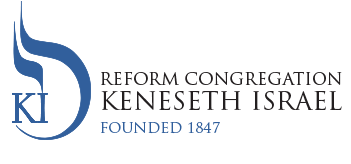Public Reading of Megilat Haatzmaut-Israel’s Declaration of Independence
This Shabbat, we read the Torah Portion of EMOR, the eighth portion in the book of Vayikra/Leviticus, 21:1–24:23. The Israelites are in the middle of their wandering in the Sinai Desert on their 40-year journey to the Promised Land.
The second section of this Sidrah, chapter 23:1-44, contains the full catalogue of all the holidays to be observed by the Jewish people, including Shabbat, Passover, the 49 day counting of the Omer, Shavuot, the remembrance of Blowing the Shofar-Rosh Hashanah, the solemn fast day on the 10th of the Month-Yom Kippur, Sukkot, during which the Israelites dwell in huts for seven days and take in their hands the “Four Species-Lulav and Etrog,” and the eighth day of Assembly-Shmini Atzeret. To this day, 3300 years after the sojourn in the desert, we observe and celebrate all these holidays as described in this catalog of national celebrations that we find in Parashat Emor!
Last Thursday morning, I watched a special service and celebration streamed from in front of the southwestern corner of the Kotel, The Western Wall. The Kotel is our most sacred Jewish spot on Earth; It is the western retaining wall of the Temple Mount constructed in 512 Before the Common Era by the returning Jews freed from Babylonian captivity by the Persians.
Today, Jews the world over face toward this Wall as we recite the daily, Shabbat, and holiday prayers. At present, the main section of the Kotel is reserved for Minyanim of Orthodox Jews. Several years ago, the Israel government consecrated the southwestern corner of the Kotel for prayer services by non-orthodox Jewish groups. Reform and Conservative B’nai and B’not Mitzvah services take place on a platform in front of this southwestern corner.
For several years, there has been a public reading of the Israel Declaration of Independence a few days before Yom HaZikaron/Day of Remembrance, and Yom Haatzmaut/Israel Independence Day. In the third section of the Tanach/Hebrew Bible, there are five scrolls/Hamesh M’Gilot, that are read aloud during the Jewish calendar year: Kohelet/Ecclesiastes is read on Sukkot; Esther is read on Purim; Shir Hashirim/Song of Songs is read on the intermediate Shabbat of Passover; Ruth is read on Shavuot; and Eicha/Lamentations is read on Tisha B’av/the Ninth Day of Av. These five scrolls are chanted according to beautiful and unique cantillation systems.
The new ceremony of chanting Megilat Haatzmaut/the Israel Declaration of Independence in front of the Egalitarian Kotel is patterned on the chanting of the five Biblical scrolls. The Declaration has been transcribed onto a beautiful scroll and cantillation marks have been placed in the text. Last Thursday, the ceremony was streamed all over the world. It was led by Dr. Yitzhar Hess, vice-chairman of the World Zionist Organization. Two young Cantors, one male and one female, led the singing of the liturgical sections of the ceremony, accompanied by guitar.
There were thirteen Megilah readers who chanted their assigned sections in differing styles. A few used traditional Ashkenazic Haftarah cantillations, and a few used Torah cantillations. Two participants proclaimed their assigned sections without chant. One utilized an oriental musical system.
The readers were drawn from diverse Jewish and religious communities, including representatives of Israeli Orthodox, Masorti/Conservative, Reform, and secular. Rabbi Dr. Donniel Hartman, president of the Hartman Institute and an old friend, chanted his selection according the Haftarah tropes.
This dramatic and highly emotional program was concluded by the singing of Acheinu/Our Brothers and Sisters, a prayer for the liberation of the hostages now sung at KI and in Synagogues of every denomination all over the world, and the Prayer for the State of Israel, sung according to a melody by the American Cantor, Hazzan Sol Zim. This ceremony in front of the Egalitarian Kotel and two large Israeli flags was attended by a small group of Jews limited by security concerns. I am sure that everyone present thought about the uncertainty of the Israeli future and the precarious fate of the hostages held in the Gaza tunnels. The ceremony reflected both innovative religious creativity, traditional practices and both old and new music.
HOT OFF THE PRESS: I just opened the Times of Israel newspaper of May 14, and I read an amazing article entitled, “Emerging Independence Day ritual inspires unity and gratitude in shadow of October 7.” The article describes a new ritual of reading the Israeli Declaration of Independence in small groups every day during the “Ten Days of Gratitude,” from Holocaust Day to Independence Day. The article correctly points out that this new practice is especially poignant this year as Israel is mired in the Gaza War. The Declaration includes many familiar themes and dates in Jewish history that are especially meaningful this year. The Times of Israel article points out that, “the Declaration describes the Jewish people’s origin in the Land of Israel, their exile from it, and their subsequent struggles to return. It mentions important people, dates, and historical events that led to the founding of the state. The declaration finishes with a reference to G-d — ‘the Rock of Israel.’”
Rabbi Yardein Katz, head of Mabua, the organization coordinating the teaching of this new ritual, has made available a kit of materials free for all who want to convene both large and small groups to read, chant, and study the Israeli Declaration of Independence. You can and should download the texts and recordings of the Declaration here: https://tentoda.org/megila
Ellen and I join with you in our prayers for the release of the hostages and for Israel at Peace. AM YISRAEL CHAI!
